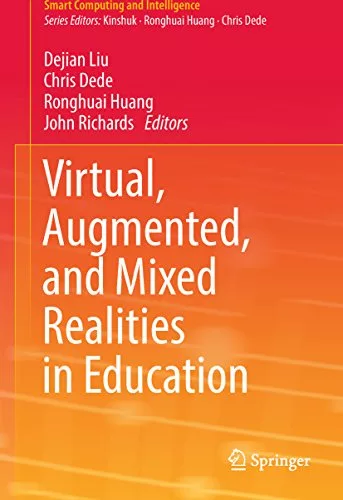Virtual, Augmented, and Mixed Realities in Education
Virtual Reality in Education
Virtual reality (VR) has garnered immense popularity in recent years, transforming various industries, including education. It provides an immersive experience by creating a simulated environment that replicates the real world or transports users to a completely different setting. In the field of education, VR has enabled students to engage in interactive and experiential learning, offering novel ways to explore complex concepts.
One significant advantage of VR in education is its ability to transcend geographical boundaries. Students can virtually visit famous historical sites, explore distant planets, or dive into the depths of the ocean. This not only enhances their understanding of subject matter but also sparks their curiosity and enthusiasm for learning. VR simulations can simulate scientific experiments, archaeological excavations, or even medical procedures, allowing students to gain practical experience without any physical risks or limitations.
Augmented Reality in Education
Augmented reality (AR) combines the digital and physical worlds by overlaying virtual elements onto the real environment. Through the use of smartphones and tablets, AR technology can bring static images or objects to life, providing an interactive and engaging learning experience. In education, AR has demonstrated its potential to enhance the learning process by introducing visual and interactive components.
AR applications can transform textbooks into interactive 3D models, making complex subjects more understandable and memorable. For example, students can visualize the human anatomy by pointing their devices at a printed image and seeing organs and systems come to life. AR can also be used for language learning, allowing students to practice vocabulary by pointing devices at objects and receiving translations or pronunciation assistance. This interactive and dynamic approach to education fosters student engagement and can improve retention of knowledge.
Mixed Reality in Education
Mixed reality (MR) takes the merger of virtual and real worlds a step further by integrating virtual elements into the physical environment and enabling users to interact with both. This technology offers a seamless blend of the physical and digital worlds, providing educators and students with unprecedented opportunities for collaborative exploration and learning.
In the classroom setting, MR can facilitate group projects and foster teamwork. Students can collaborate in real-time, working on virtual objects or solving complex problems together. Teachers can use MR to introduce visual aids or annotations into the physical classroom, thereby enhancing discussions and explanations. MR also offers the potential for remote learning, where students can interact with virtual teachers or join virtual classrooms from the comfort of their homes. This technology opens up a myriad of possibilities for personalized and flexible learning experiences.
The Impact of Smart Computing and Intelligence
Smart computing and intelligence play a crucial role in the seamless integration of VR, AR, and MR technologies into education. Advanced algorithms and machine learning algorithms allow for more realistic, interactive, and personalized experiences. Intelligent systems can adapt to individual student needs, tailoring content and pace to optimize learning outcomes.
The data collected from smart computing and intelligence can provide valuable insights into students’ learning patterns, enabling educators to identify strengths and weaknesses and tailor interventions accordingly. Additionally, these technologies can support assessment and feedback processes, allowing for real-time monitoring of student progress and providing personalized feedback.
In conclusion, virtual reality, augmented reality, and mixed reality are revolutionizing education by providing immersive, interactive, and experiential learning experiences. Smart computing and intelligence complement these technologies, enabling personalized and adaptive learning. As these technologies continue to evolve, their integration into education will undoubtedly enhance the way we learn and teach.
Product Description:
Here is an HTML table summarizing the information:
| ASIN | B077HQ9CT7 |
|---|---|
| Publisher | Springer; 1st ed. 2017 edition (November 13, 2017) |
| Publication date | November 13, 2017 |
| Language | English |
| File size | 8096 KB |
| Text-to-Speech | Enabled |
| Screen Reader | Supported |
| Enhanced typesetting | Enabled |
| X-Ray | Not Enabled |
| Word Wise | Enabled |
| Sticky notes | On Kindle Scribe |
| Print length | 258 pages |
Product Rating: 5
Price: $98.48
(as of Nov 04, 2023 19:35:06 UTC – Details)
Disclaimer: This blog post may contain affiliate links for products sold on Amazon.com. If you make a purchase through one of these links, we may earn a small commission at no additional cost to you. All opinions expressed here are our own and we only promote products that we have tested and believe in. The Univer Geek Team


